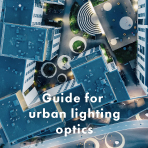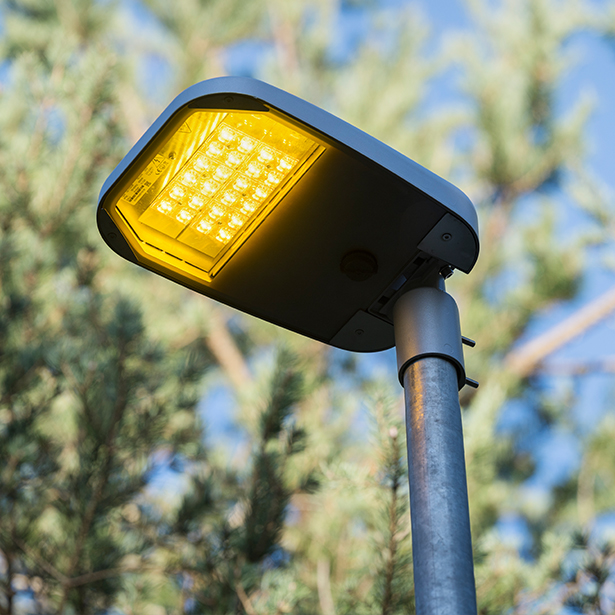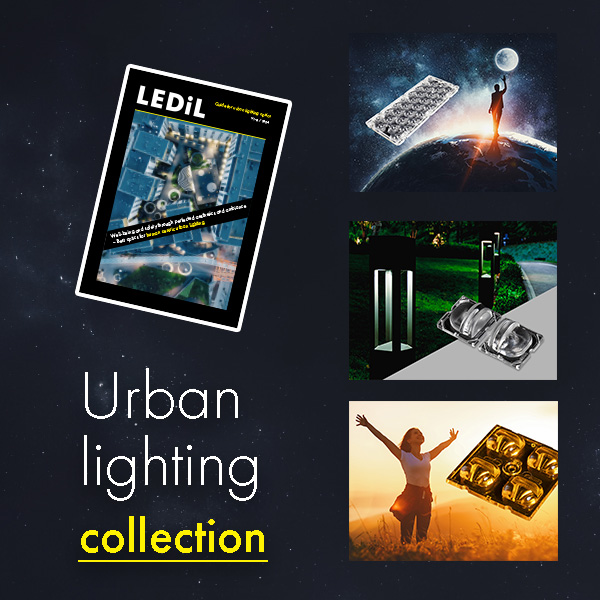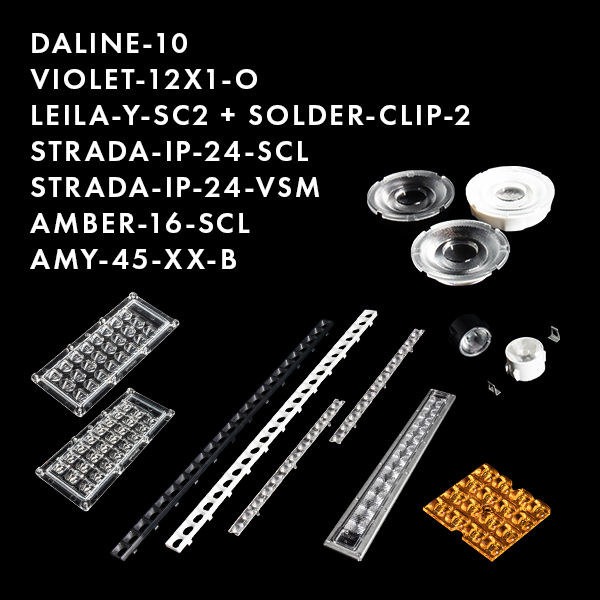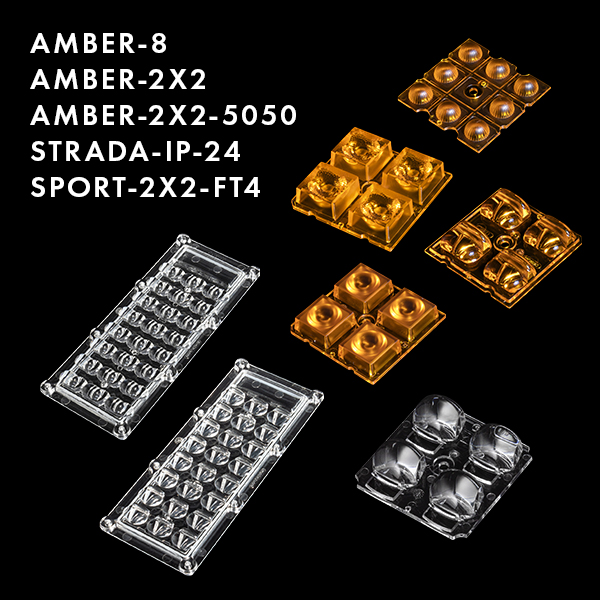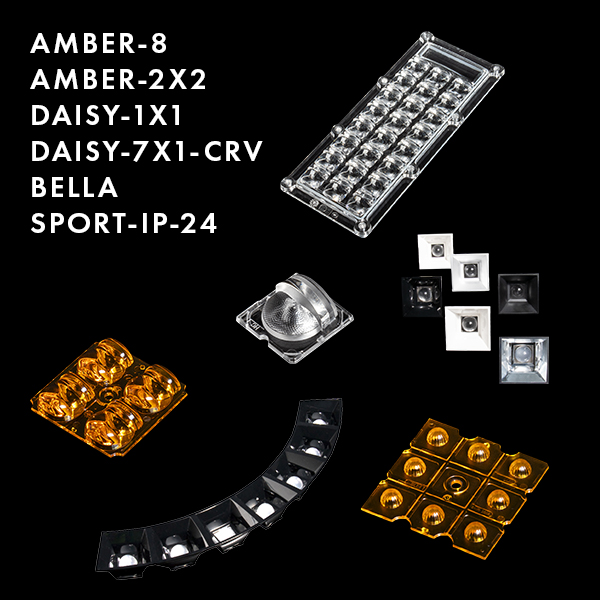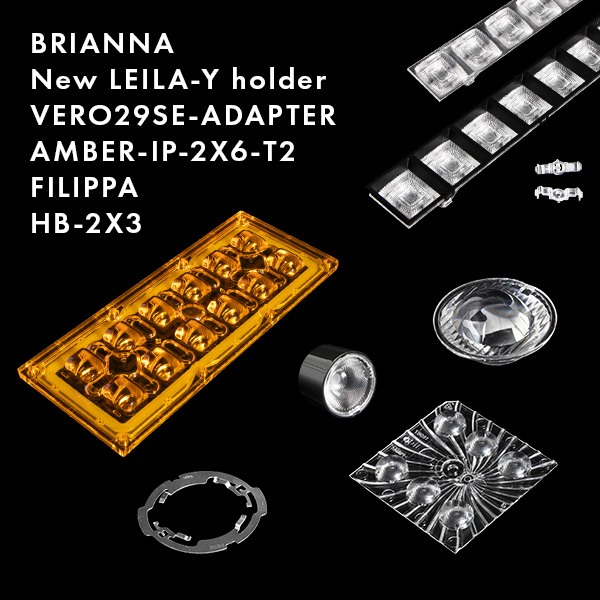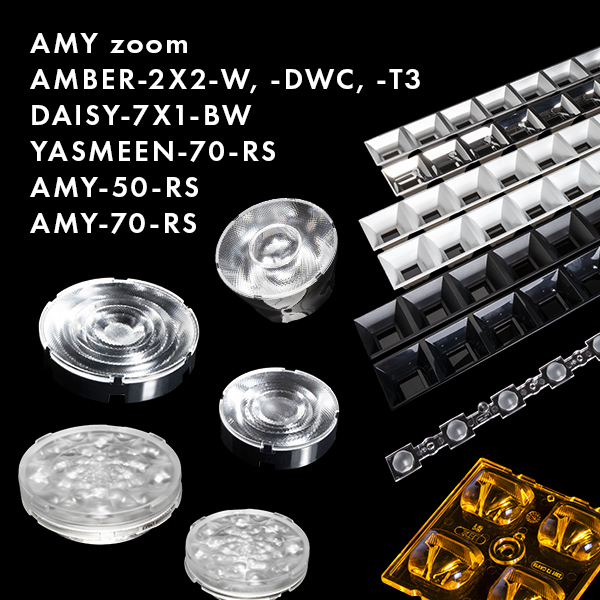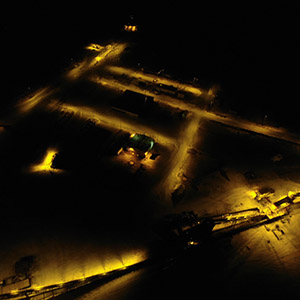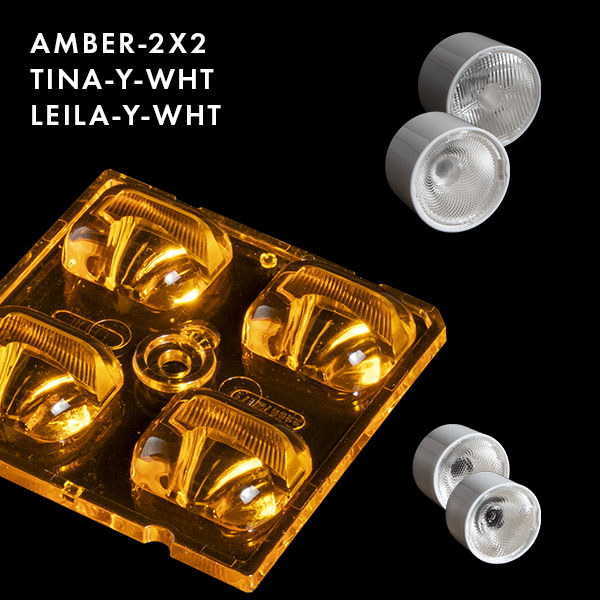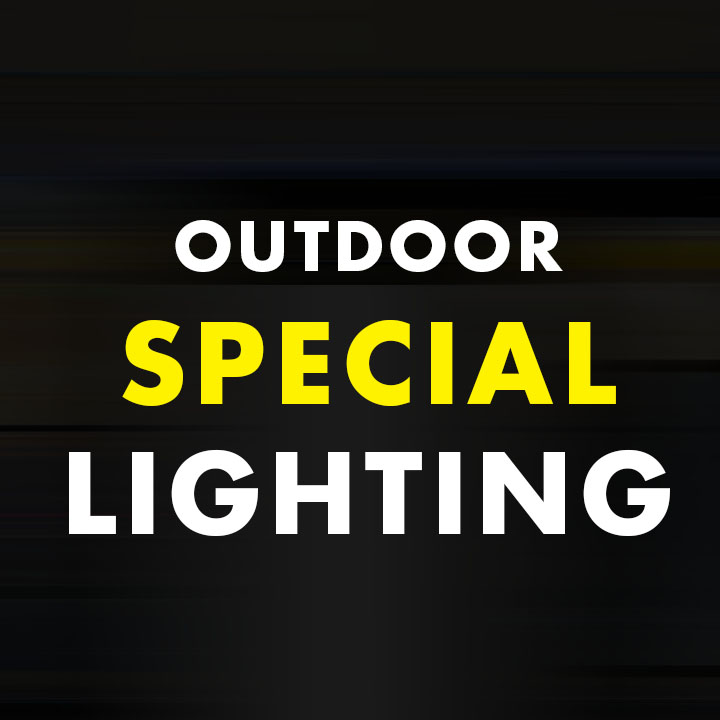News

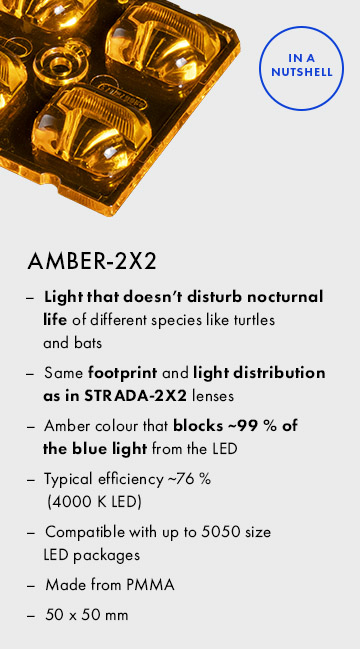
Find all available AMBER-2X2 lenses
Find all available AMBER lenses
Contact us
Contact sales
Request samples
Related content:
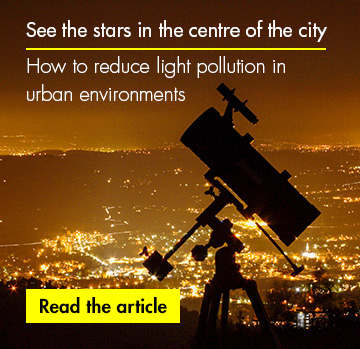 See the stars in the centre of the city - How to reduce light pollution in urban environments
See the stars in the centre of the city - How to reduce light pollution in urban environments
Create biologically sustainable lighting with LEDiL AMBER lenses
Eliminate blue light and provide always warm colours with white light LEDs.
Us and those around us
We are constantly increasing our knowledge about what good lighting is and want to remain at the forefront in providing the best optical solutions to enhance well-being for both ourselves and the ecosystem around us. In urban environments illumination itself, or sudden changes to it, can influence how nocturnal fauna behave. Some species of both flora and fauna are especially sensitive to changes in brightness levels or light wavelengths, as they influence how they communicate, navigate, or reproduce. Many species are especially sensitive to the lower part (blue light) of the spectrum from 380 to 500 nanometres which should be avoided where possible.AMBER-2X2
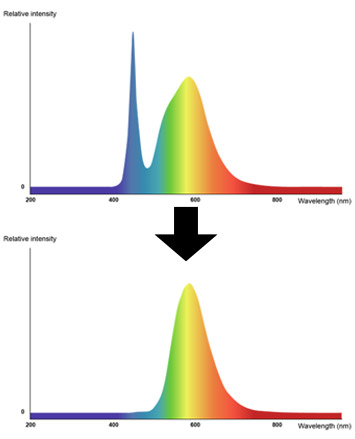 With LEDiL’s new amber coloured lenses the spectral area that contains blue light can be almost completely eliminated while maintaining a good level of optical performance and providing safe night-time illumination for everyone. By eliminating these wavelengths AMBER-2X2 also limits light pollution and allows better visibility of the night sky.
With LEDiL’s new amber coloured lenses the spectral area that contains blue light can be almost completely eliminated while maintaining a good level of optical performance and providing safe night-time illumination for everyone. By eliminating these wavelengths AMBER-2X2 also limits light pollution and allows better visibility of the night sky.
- How much blue light is getting through?
- What is the colour temperature?
- How does the light look like after using AMBER lenses?
![]()
Amount of blue light (380 – 500 nm)
| LED: Osram Duris S8 | ||
| LED CCT | C18604_AMBER-2X2-ME | C18513_AMBER-2X2-T1 |
| 2200 K | 0.19 % | 0.33 % |
| 2700 K | 0.21 % | 0.41 % |
| 3000 K | 0.32 % | 0.76 % |
| 4000 K | 0.38 % | 1.09 % |
| 5000 K | 0.40 % | 1.25 % |
| 5700 K | 0.44 % | 1.35 % |
| 6500 K | 0.45 % | 1.44 % |
CCT changes*
* due to the elimination of blue light, the measured CCT doesn’t follow the Black Body Locus line
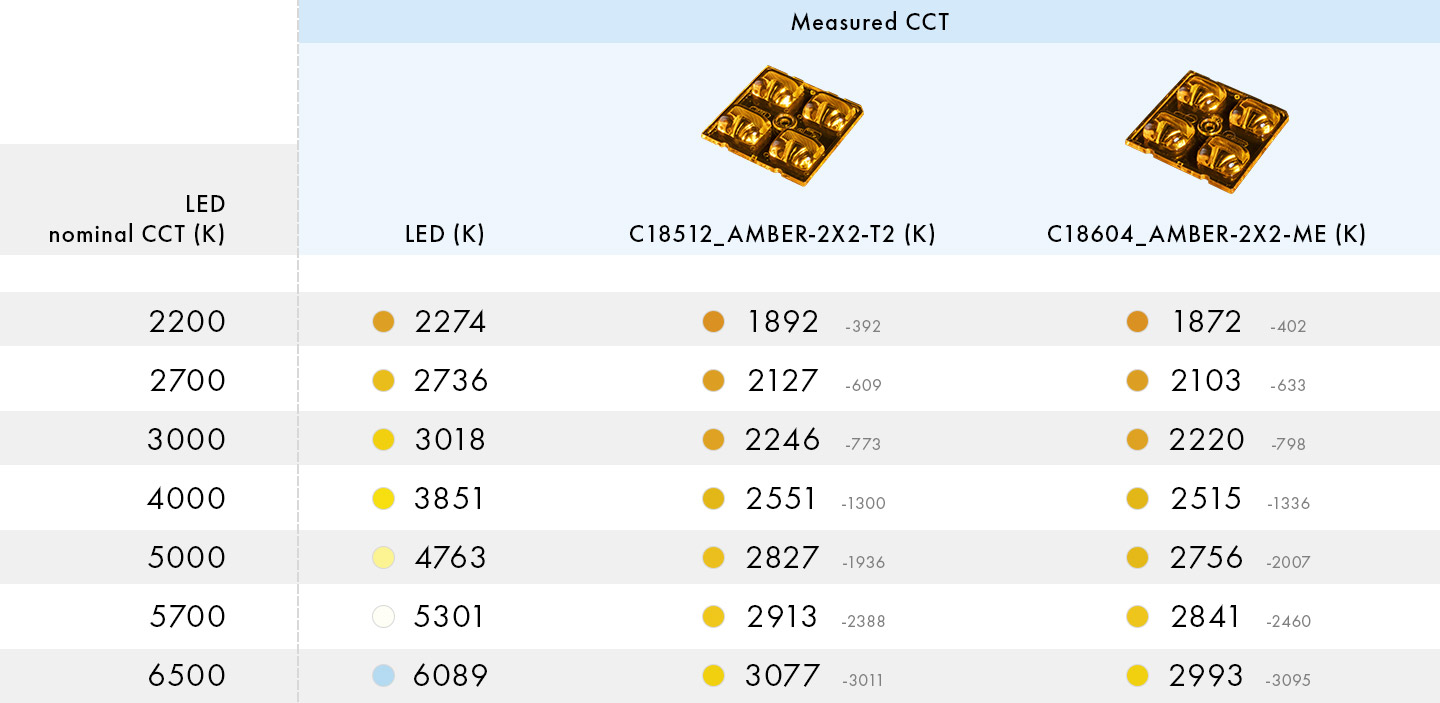
Light colour changes
| LED CCT | LED only | with AMBER lens | Output CCT |
| 2200 K |  |  | 1900 K |
| 2700 K |  |  | 2100 K |
| 3000 K |  |  | 2200 K |
| 4000 K |  |  | 2500 K |
| 5000 K |  |  | 2800 K |
| 5700 K |  |  | 2900 K |
| 6500 K |  |  | 3000 K |
| LED: Osram Duris S8 |
Light colour and spectrum changes
LED: Osram Duris S8
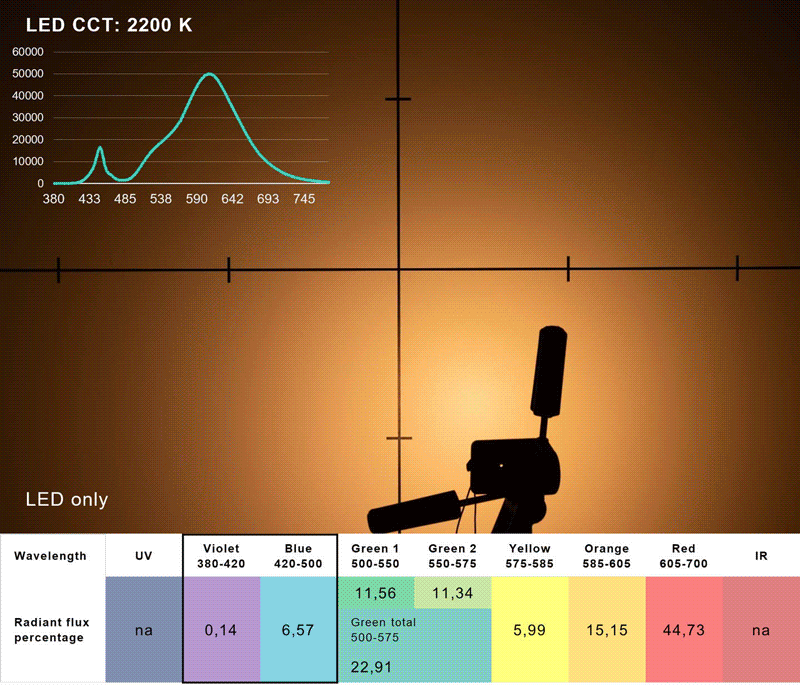
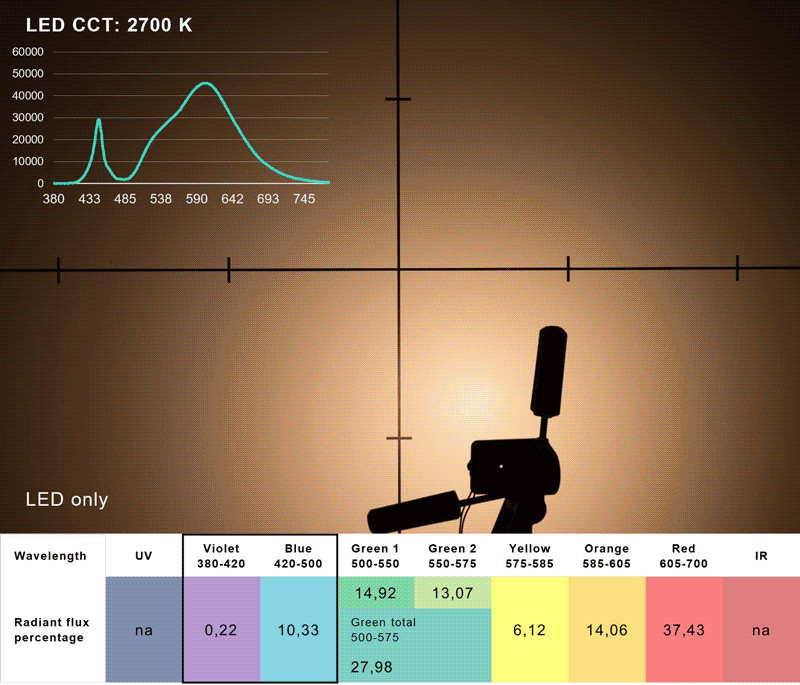
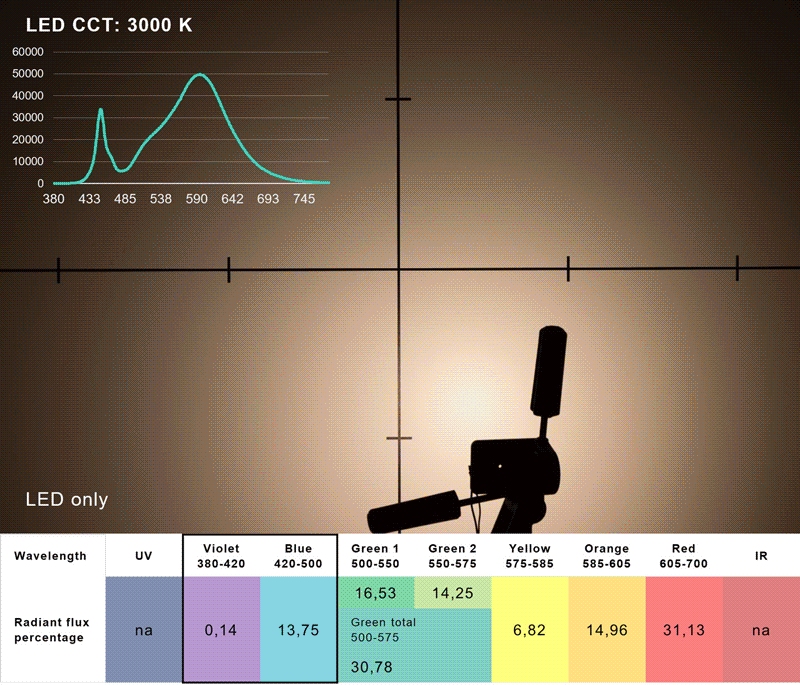
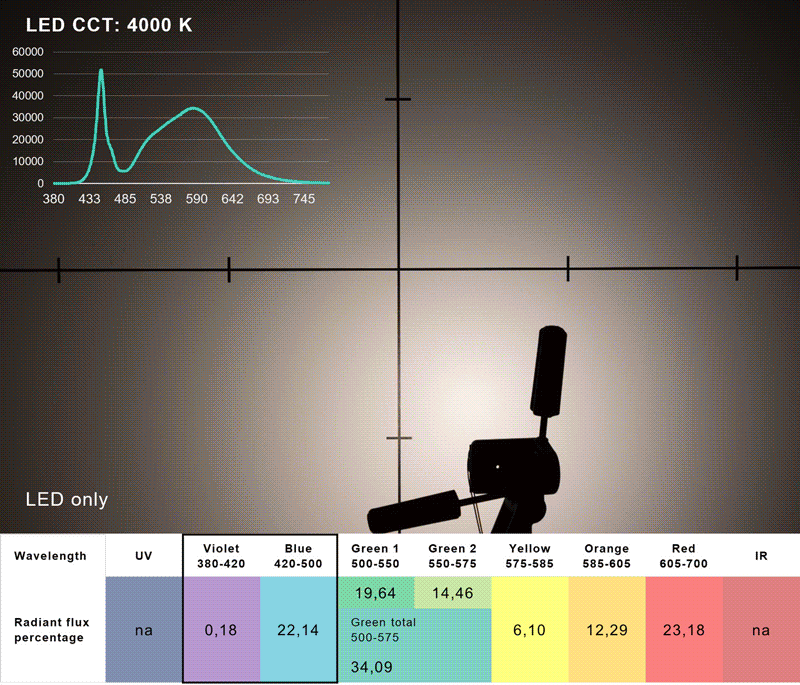
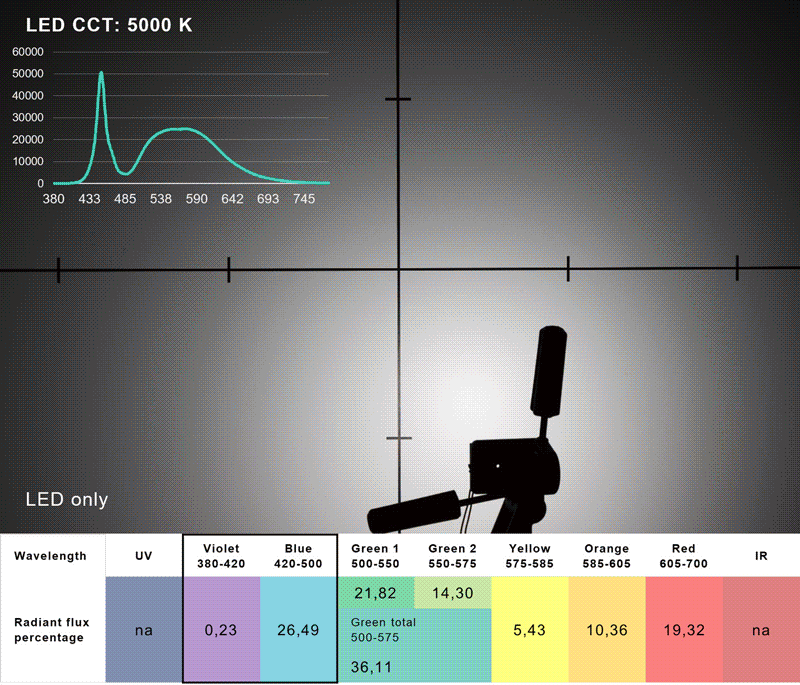
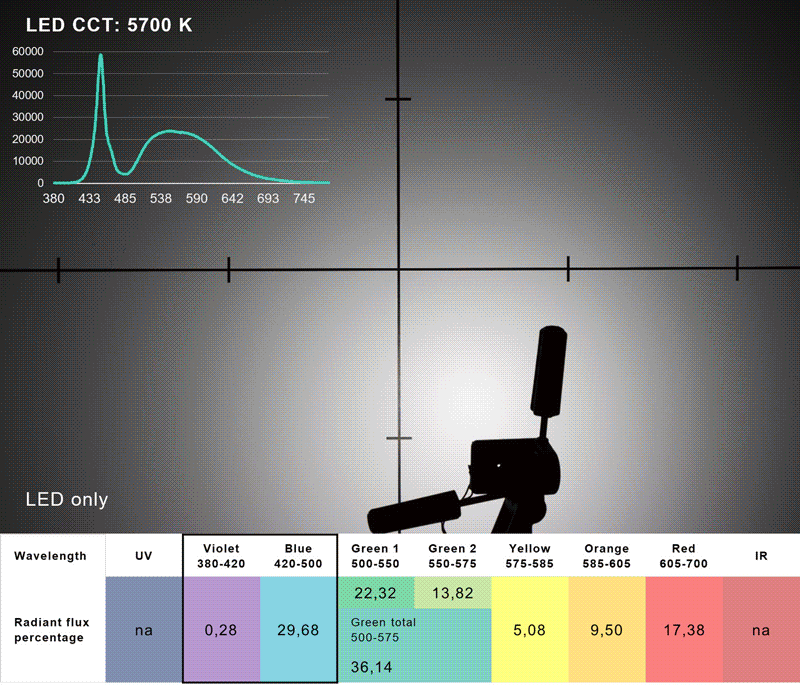
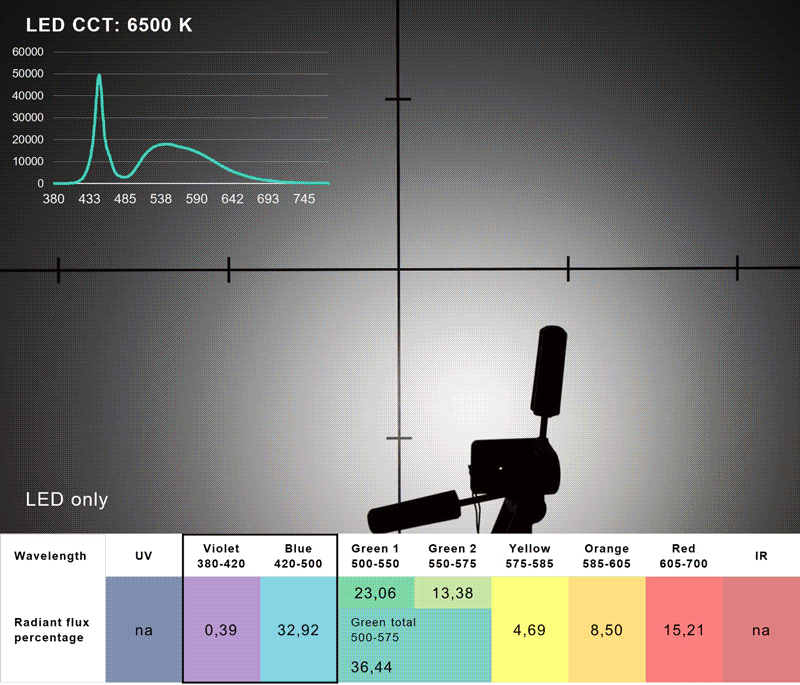
Thermal test results
It is important to note that blue light is absorbed by the lens, and therefore the more there is of it the more heat it will generate inside the lens.
Thermal test results from the lens top surface with different CCT LEDs are presented below. The results do not include ambient temperature.
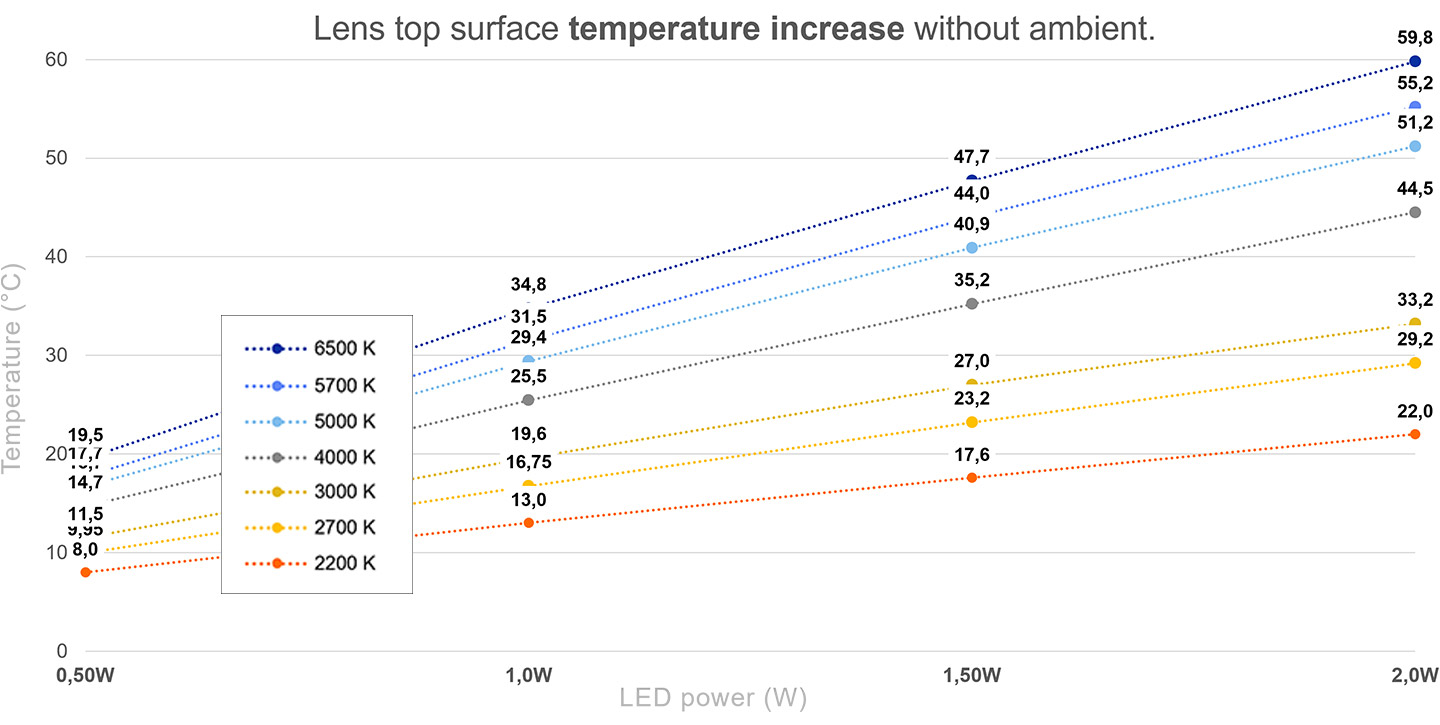
CRI
Due to the narrower spectrum the colour rendering qualities will inevitably be affected.
With AMBER-2X2 lenses the CRI will drop from around 70 to around 35 to 55. Compared to PC amber LEDs the result is similar with around 43 CRI, and with pure amber LEDs which have a really tight spectrum their CRI is typically around 10 to 14.
| CRI (Ra) | CRI (Ra) | |
| CCT | Osram Duris S8 (CRI70) | Osram Duris S8 (CRI70) + AMBER-2X2 |
| 2200 K | 74 | 54 |
| 2700 K | 73 | 51 |
| 3000 K | 71 | 44 |
| 4000 K | 72 | 41 |
| 5000 K | 71 | 39 |
| 5700 K | 71 | 38 |
| 6500 K | 69 | 36 |
![]()
Conclusion
LEDiL’s AMBER lenses cut down the blue light spectrum from white light LEDs to provide safer lighting for night-time surroundings.
Compared to a typical 6000 lm park luminaire the savings in luminaire component cost with AMBER lenses is around half that of amber coloured LEDs with clear lenses. (To achieve the same lumen output only half as many LEDs and optics are needed). This results in a more compact luminaire design and less pressure on our environment.
Help light sensitive nocturnal residents feel better in the neighbourhood near you:
Find all available AMBER-2X2 lenses
Find all available AMBER lenses


 Guide for urban lighting
Guide for urban lighting  Urban lighting insights
Urban lighting insights 
